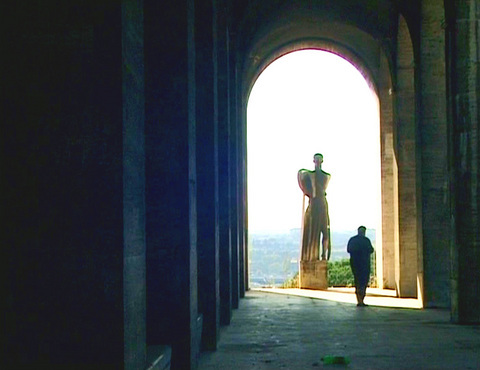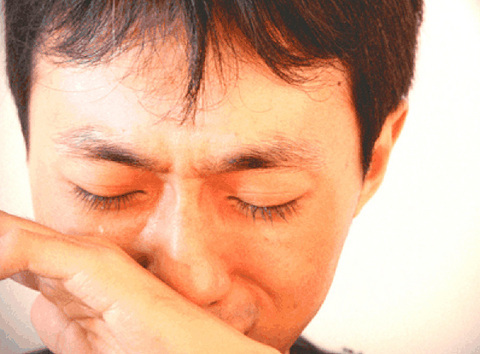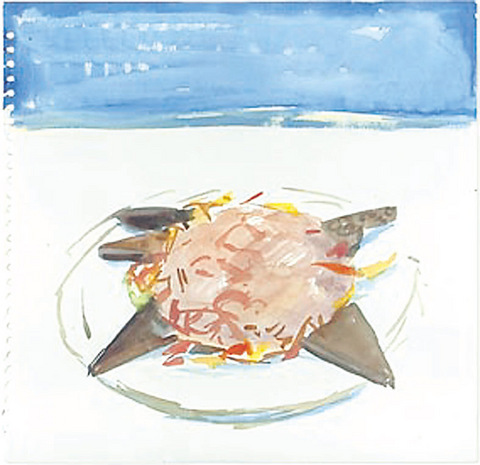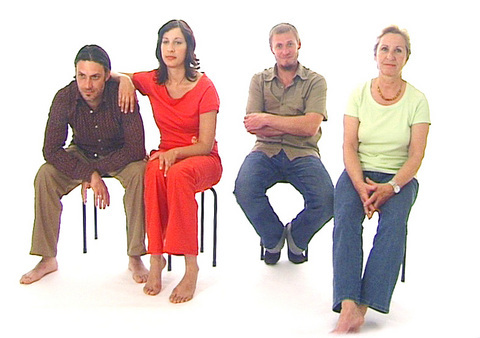Taiwan's contemporary art scene is active and international with many opportunities for local artists to participate in exhibitions abroad while holding dialogues with foreign artists at local exhibitions.
Young Taiwanese artist Wu Chi-Tsung (
Wu, whose work is noteworthy for its exploration of imagery via video, photography and mechanical instal-lation, is currently exhibiting his art for the first time in the UK at the Artes Mundi exhibition that ends on May 7.

PHOTOS COURTESY OF THE ARTIST
The eight selected artists -- from India, Finland, South America, Europe and Taiwan -- are regarded as having made significant contributions to the world's understanding about the human condition. The prize will be awarded to one of the selected artists on March 31.
In 2004, New York-based Chinese artist Xu Bing received the first award for his work Where Does The Dust Collect Itself, made from dust collected from the streets in Manhattan after Sept. 11.
Besides the US$40,000 prize money, the winning artist's work will be exhibited at a major show and purchased for national collections.

Currently on view at the German Cultural Center in Taipei is a modest, yet poignant exhibition of German and Taiwanese artists titled Intimate Relations. Curator/artist Andreas Walther is no stranger to Taiwan as he has been living, exhibiting and cura-ting here for several years and is therefore familiar with lifestyles both in Cologne and Taipei.
The videos, photographs and drawings explore the theme of closeness between people and provocatively ask if there are cultural differences between Western and Eastern personal relationships.
Some of the art on view seems to act like a sociology experiment. This is most notable in Andreas Walther's riveting video Family Portraits, in which a video camera runs for 10 minutes, while the invited family members (who were instructed not to speak to each other while seated in the studio facing a large mirror) fidget, giggle, and non-verbally interact with each other.

PHOTO COURTESY OF THE ARTIST
Sometimes with conceptual art, a background explanation is required in order to comprehend the art. To fully understand Chen Ting-yu's He Cried it is necessary to read about his concept beforehand. There are two see-mingly identical photos of a close-up of a man's face wiping away tears from his eyes. Chen photographed himself crying, as this was part of his experience of being involved in an intimate love relationship. Then he photographed his boyfriend mimicking his action.
However, his boyfriend couldn't fake the tears.
Chen's two portraits show that even with an intimate partner we can achieve simulations of closeness but achieving actual oneness is nearly impossible.

Another conceptual work is Cologne-based artist Cony Theis' Familienportrait. With her mother, sister and two nieces, the five female family members painted a series of watercolors together.
Chen Shun-chu's (陳順築) Journeys in Time is a photographic series where he uses the family snapshot in a similar way to the Proustian madeleine to recapture the idyllic past of his childhood.
Juergen Heiter's film The Place in the Woods is interesting, but due to its German soundtrack there are limits for the audience. The architecture of Rome and Paris serves as a backdrop to tell a story about modernity, while in the foreground couples try to make relationships work even though intimacy is glaringly absent.

Art Notes:
What: Intimate Relations
Where: German Cultural Center, 12F, 20 Heping W Rd, Sec 1, Taipei (
When: To April 20
Tel: (02) 2365 7294

Oct. 27 to Nov. 2 Over a breakfast of soymilk and fried dough costing less than NT$400, seven officials and engineers agreed on a NT$400 million plan — unaware that it would mark the beginning of Taiwan’s semiconductor empire. It was a cold February morning in 1974. Gathered at the unassuming shop were Economics minister Sun Yun-hsuan (孫運璿), director-general of Transportation and Communications Kao Yu-shu (高玉樹), Industrial Technology Research Institute (ITRI) president Wang Chao-chen (王兆振), Telecommunications Laboratories director Kang Pao-huang (康寶煌), Executive Yuan secretary-general Fei Hua (費驊), director-general of Telecommunications Fang Hsien-chi (方賢齊) and Radio Corporation of America (RCA) Laboratories director Pan
The consensus on the Chinese Nationalist Party (KMT) chair race is that Cheng Li-wun (鄭麗文) ran a populist, ideological back-to-basics campaign and soundly defeated former Taipei mayor Hau Lung-bin (郝龍斌), the candidate backed by the big institutional players. Cheng tapped into a wave of popular enthusiasm within the KMT, while the institutional players’ get-out-the-vote abilities fell flat, suggesting their power has weakened significantly. Yet, a closer look at the race paints a more complicated picture, raising questions about some analysts’ conclusions, including my own. TURNOUT Here is a surprising statistic: Turnout was 130,678, or 39.46 percent of the 331,145 eligible party

The classic warmth of a good old-fashioned izakaya beckons you in, all cozy nooks and dark wood finishes, as tables order a third round and waiters sling tapas-sized bites and assorted — sometimes unidentifiable — skewered meats. But there’s a romantic hush about this Ximending (西門町) hotspot, with cocktails savored, plating elegant and never rushed and daters and diners lit by candlelight and chandelier. Each chair is mismatched and the assorted tables appear to be the fanciest picks from a nearby flea market. A naked sewing mannequin stands in a dimly lit corner, adorned with antique mirrors and draped foliage

The election of Cheng Li-wun (鄭麗文) as chair of the Chinese Nationalist Party (KMT) marked a triumphant return of pride in the “Chinese” in the party name. Cheng wants Taiwanese to be proud to call themselves Chinese again. The unambiguous winner was a return to the KMT ideology that formed in the early 2000s under then chairman Lien Chan (連戰) and president Ma Ying-jeou (馬英九) put into practice as far as he could, until ultimately thwarted by hundreds of thousands of protestors thronging the streets in what became known as the Sunflower movement in 2014. Cheng is an unambiguous Chinese ethnonationalist,